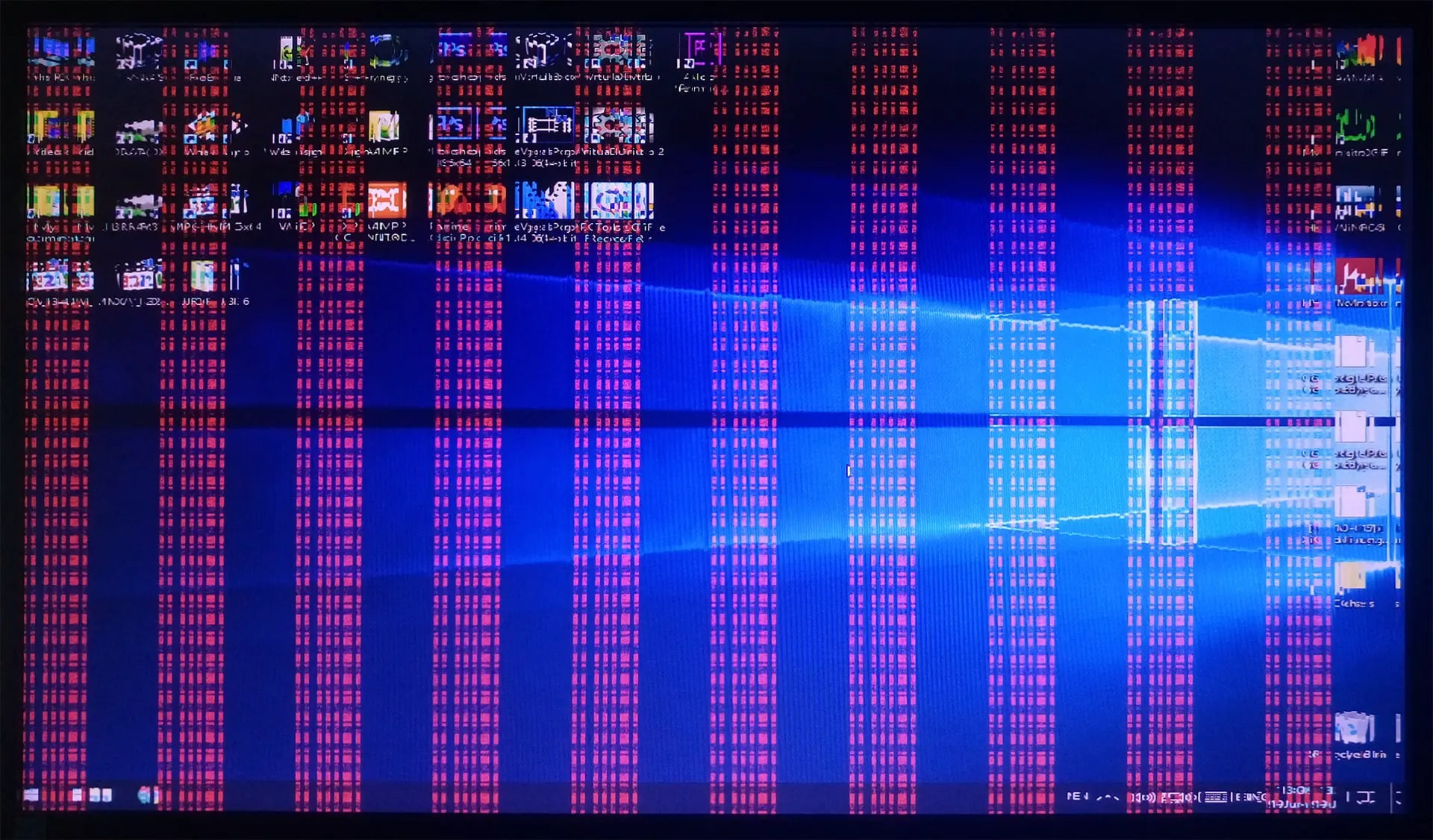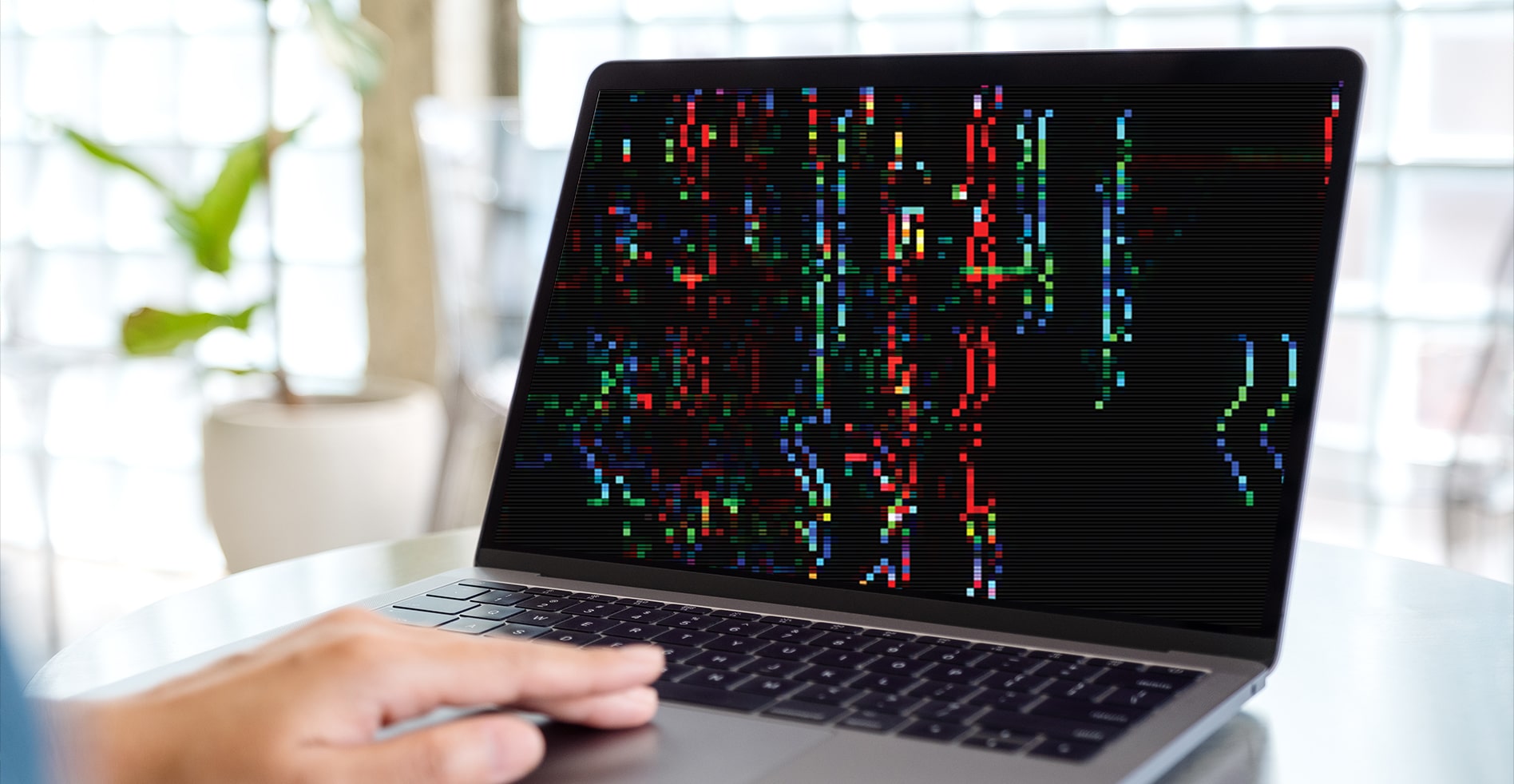Signs that your graphics card might be dying
If you’re an avid gamer or use graphics-intensive software, your graphics card plays a vital role in delivering a smooth and visually appealing experience. However, like any other component in your computer, graphics cards can deteriorate over time and eventually fail. It’s essential to be aware of the signs that indicate your graphics card may be on the verge of dying, so you can take appropriate action before it causes significant issues. Here are some common signs to watch out for:
- Crashes and freezing: One of the most noticeable signs of a dying graphics card is frequent crashes and freezing during graphic-intensive tasks, such as gaming or video editing. If your system consistently locks up or becomes unresponsive, it’s worth investigating the graphics card as a potential culprit.
- Artifacting: Another sign of a dying graphics card is artifacting. This occurs when your screen displays graphical glitches, such as distorted images, flickering, or strange colored pixels. If you notice these visual anomalies, it’s likely that your graphics card is struggling.
- Weird graphical glitches and anomalies: Apart from artifacting, a dying graphics card may exhibit other graphical abnormalities. These can include screen tearing, horizontal or vertical lines appearing on the screen, or textures not rendering correctly. If you notice these issues persistently, it’s a red flag for your graphics card’s health.
- Overheating and loud fan noises: Over time, dust and debris can accumulate on your graphics card’s heat sink, leading to overheating. Excessive heat can cause performance problems and ultimately damage the card. If you experience frequent system shutdowns due to overheating or notice abnormally loud fan noises, it’s critical to address the cooling issues and potentially check the graphics card’s condition.
- Performance deterioration: If you notice a significant drop in performance while running graphics-intensive applications or games, it could be a sign of a dying graphics card. You may experience lag, stuttering, or slower frame rates than usual, indicating that the card is struggling to keep up with the demands placed on it.
- Driver issues and system crashes: A faulty graphics card can cause recurring driver issues or system crashes. If you consistently encounter display driver errors, unexpected program crashes, or system restarts, it’s worth investigating the graphics card as a potential culprit.
- Failure to display image properly: If you experience issues where your monitor fails to display an image properly or you get a “no signal” message, it could indicate a problem with your graphics card. This can occur even if there is power to the monitor, suggesting that the card may be failing to transmit information correctly.
- Blue screen of death (BSOD) errors: While BSOD errors can stem from various causes, a failing graphics card can sometimes trigger these crashes. If you consistently encounter BSOD errors during graphically demanding tasks, it’s worth considering the possibility of your graphics card being the culprit.
- Computer shutdowns or restarts unexpectedly: If your system shuts down or restarts unexpectedly while performing graphics-intensive tasks, it could be a symptom of a dying graphics card. Sudden power loss or instability can be a result of your card struggling to communicate with the rest of the system.
- No video output at all: Finally, if you have no video output at all, it’s a glaring sign that something is wrong with your graphics card. In some cases, the monitor might display a “no signal” message or remain blank, indicating a total failure of the graphics card.
Remember that experiencing one or two of these symptoms doesn’t necessarily mean your graphics card is dying. However, if you notice several of these signs occurring persistently, it’s wise to consider the possibility that your graphics card may be reaching the end of its lifespan. In the next section, we will explore some steps you can take to troubleshoot and potentially resolve these issues before making any hardware replacements.
Crashes and freezing
One of the most telling signs that your graphics card might be on the verge of dying is experiencing frequent crashes and freezing during graphically intensive tasks. Whether you’re playing the latest video games or working with resource-intensive software, a failing graphics card can struggle to keep up with the demands placed on it.
When your graphics card is struggling, you’ll notice your system locking up or becoming unresponsive. This can occur during gameplay, causing your game to crash or freeze suddenly. If you’re working on graphic design or video editing projects, you may find your software freezing or becoming unresponsive at regular intervals.
These crashes and freezes can be frustrating, disrupting your workflow or ruining your gaming experience. If you notice this happening consistently, it’s a red flag that your graphics card is under significant strain or facing hardware issues.
There are a few possible causes for crashes and freezing. One possibility is that your graphics card is overheating. Over time, dust and debris can accumulate on the heatsink, inhibiting proper airflow and causing the card to reach high temperatures. When a graphics card becomes too hot, it can lead to system instability, resulting in crashes and freezes.
Another possible cause is inadequate power supply. If your power supply unit (PSU) is unable to provide sufficient power to your graphics card, it may result in instability and crashes. Ensure that your power supply is compatible with your graphics card and meets the recommended wattage requirements.
Additionally, outdated or faulty graphics card drivers can also contribute to crashes and freezing issues. Make sure you have the latest drivers installed for your graphics card and consider updating them regularly to ensure optimal performance and stability.
If you experience crashes and freezing, start by checking the temperatures of your graphics card using software tools such as MSI Afterburner or GPU-Z. If it’s running at excessively high temperatures, clean out any dust from the heatsink and ensure proper airflow around the card by ensuring all fans are functioning correctly.
If overheating doesn’t seem to be the issue, try updating your graphics card drivers. Visit the manufacturer’s website to download the latest drivers for your specific graphics card model.
If you’ve tried these steps and the crashes and freezing persist, it’s possible that your graphics card may be failing. At this point, it would be advisable to seek professional assistance or consider replacing the graphics card altogether.
Remember, experiencing crashes and freezing alone doesn’t definitively indicate a dying graphics card. However, if these issues occur consistently and are accompanied by other symptoms mentioned in this article, it’s important to investigate further to determine the root cause.
Artifacting
If you start noticing strange visual anomalies on your screen, such as distorted images, flickering, or unusual colored pixels, it may be a sign of a dying graphics card. This phenomenon is known as artifacting and can indicate underlying issues with your graphics card’s hardware or memory.
Artifacting occurs when the graphics card fails to render and display images correctly, resulting in graphical glitches or abnormalities. These glitches can manifest in various ways, including random lines or squares appearing on the screen, textures not rendering properly, or parts of the display becoming pixelated or blurred.
One of the main causes of artifacting is a problem with the graphics card’s memory. Over time, memory modules on the graphics card may degrade or fail, leading to visual abnormalities when processing and rendering graphics. These memory issues can cause inconsistent data to be displayed, resulting in the visual glitches you observe on your screen.
If you experience artifacting, it’s important to rule out other possible causes before concluding that your graphics card is at fault. Sometimes, artifacting can be caused by outdated or incompatible graphics card drivers. Ensure that you have the latest drivers installed for your graphics card and consider performing a clean driver installation to eliminate any potential driver conflicts.
Another possible cause of artifacting is overheating. Similar to crashes and freezing, excessive heat can affect the performance and stability of your graphics card, leading to visual anomalies. Make sure that your graphics card’s cooling system is clean and functioning properly, and consider improving airflow in your system by ensuring proper cable management and adequate case ventilation.
However, if you’ve ruled out driver issues and overheating as the cause, and the artifacting persists, it’s likely that your graphics card is indeed experiencing hardware-related problems.
In this case, there aren’t many user-friendly DIY solutions to rectify the issue. Artifacting usually signifies a more serious problem with the graphics card, such as a failing GPU or faulty memory modules. It’s recommended to seek professional assistance or consider replacing the graphics card if the artifacting becomes severe or significantly impacts your ability to use your computer or enjoy games and multimedia content.
Remember, occasional visual glitches or anomalies may not necessarily indicate a dying graphics card. However, if you consistently observe artifacting during normal usage and it is accompanied by other symptoms such as crashes, freezes, or performance issues, it’s prudent to investigate further and take appropriate action.
Weird graphical glitches and anomalies
Aside from artifacting, another sign that your graphics card may be dying is the presence of weird graphical glitches and anomalies on your screen. These glitches can manifest in different ways, from minor visual distortions to more noticeable graphical abnormalities that impact your overall viewing experience.
One common graphical glitch is screen tearing, which occurs when your monitor displays fragmented images or horizontal lines during movement on the screen, particularly in fast-paced games or videos. This issue often indicates a problem with the synchronization between your graphics card and monitor.
Other graphical anomalies can include strange shapes or objects appearing on your screen, textures not rendering correctly, or areas of the display going black or becoming pixelated. You may also encounter instances where colors appear distorted or oversaturated, making images and videos look unnatural or washed out.
These graphical glitches and anomalies are indicative of underlying issues with your graphics card’s ability to process and render visuals accurately. They can occur due to various factors, including hardware malfunctions, driver problems, or compatibility issues between the graphics card and other components of your system.
If you notice weird graphical glitches and anomalies, it’s essential to rule out any potential software-related causes first. Start by ensuring that your graphics card drivers are up to date. Outdated or incompatible drivers can lead to graphical abnormalities on your screen. Visit the manufacturer’s website and download the latest drivers for your specific graphics card model.
You may also want to check for any known issues or conflicts with specific software applications you’re using. Sometimes, certain programs or games may have compatibility issues with certain graphics cards, resulting in graphical abnormalities. Check the software’s official support forums or community for any reported issues or recommended settings for optimal compatibility.
If updating your drivers and checking for software conflicts doesn’t resolve the issue, it’s likely that your graphics card is experiencing hardware problems. Unfortunately, these types of issues are often not easily fixable by the user.
In such cases, it’s recommended to seek professional help or consider replacing the graphics card. A professional technician can diagnose the problem accurately and determine whether repair or replacement is the best course of action.
Remember, encountering graphical glitches occasionally doesn’t necessarily mean your graphics card is dying. However, if these glitches persist and are accompanied by other symptoms such as crashes, freezes, or significant performance degradation, it’s important to investigate further and take appropriate actions to prevent any further damage to your system.
Overheating and loud fan noises
Overheating is a common issue that can affect the performance and lifespan of your graphics card. When a graphics card operates at high temperatures for extended periods, it can result in various problems, including decreased performance, instability, and even permanent damage. One of the telltale signs of overheating is the presence of loud fan noises.
Graphics cards have built-in fans or cooling systems to dissipate heat and keep the temperature within a safe range. However, over time, dust and debris can accumulate on the cooling system, hindering proper airflow and leading to increased temperatures.
If your graphics card is overheating, you may experience noticeable performance degradation during graphically intensive tasks, such as gaming or rendering. The system may also become unstable, leading to crashes or freezes. Additionally, you might notice that your computer’s fans, particularly the one on your graphics card, are running at higher speeds, resulting in loud and noticeable fan noises.
To alleviate overheating issues and reduce fan noise, it’s important to keep your graphics card and overall system clean. Start by opening your computer case and carefully remove any accumulated dust or debris from the cooling system using compressed air or a soft brush. Pay close attention to the graphics card’s heatsink and fan blades.
Ensuring proper airflow inside your computer case is also crucial. Make sure that all fans, including the one on your graphics card, are spinning freely and functioning as intended. Check for any obstructions or cables blocking airflow and consider optimizing cable management to improve air circulation.
If cleaning and optimizing airflow don’t resolve the overheating issue, you may need to consider additional cooling solutions. Installing additional case fans or upgrading to an aftermarket GPU cooler can help improve heat dissipation and reduce temperatures. However, keep in mind that modifying the cooling system may void your graphics card’s warranty, so proceed with caution.
In some cases, the overheating problem may persist despite cleaning and optimizing airflow, indicating a more serious issue with the graphics card’s cooling system. If this is the case, it’s advisable to seek professional assistance or contact the manufacturer for support.
Remember, overheating can significantly impact the performance and longevity of your graphics card. It’s crucial to monitor temperatures regularly using software utilities and take necessary steps to prevent overheating, such as cleaning, optimizing airflow, and considering additional cooling options when needed.
Performance deterioration
If you’ve noticed a significant drop in the performance of your graphics card, it could be a clear indication that it’s starting to fail. Performance deterioration can manifest in various ways and can significantly impact your overall computing experience, particularly when running graphics-intensive applications or playing games.
One of the obvious signs of performance deterioration is reduced frame rates or lower overall graphics quality in games. If you notice that games you used to play smoothly now struggle to maintain a decent framerate or constantly stutter, it’s likely due to your graphics card’s diminishing capabilities.
In addition to gaming, you may experience slower rendering times when working with graphic design software or video editing applications. Complex effects or processes that used to execute quickly may now take significantly longer to complete. This decrease in performance can severely hinder your productivity, causing frustration and delays in your work.
There can be several causes for the performance deterioration of a graphics card. Over time, the graphics card’s hardware, including the GPU itself, cooling system, or memory modules, can deteriorate. This degradation can result in reduced performance and the inability to handle the demands of modern games or software effectively.
Another possible cause is outdated or incompatible drivers. As newer graphics-intensive applications and games are released, developers often optimize their software for the latest graphics card drivers. If you fail to update your drivers, your graphics card may not be able to take full advantage of the optimizations, leading to performance issues.
In some cases, a graphics card may not be properly seated in the PCIe slot or may have loose connections, which can also result in performance degradation. Checking the physical installation of the card and ensuring all connections are secure can help eliminate this as a potential issue.
When experiencing performance deterioration, it’s recommended first to update your graphics card drivers to the latest version available from the manufacturer’s website. The updated drivers may improve stability and optimize performance for newer games and applications.
If updating the drivers doesn’t yield satisfactory results, you can try running stress tests and benchmarking software to identify any potential hardware issues. These tests can help diagnose if the drop in performance is due to a failing graphics card.
Unfortunately, if the performance deterioration persists after attempting software updates and diagnostic tests, it’s likely that the graphics card is reaching the end of its lifespan. In such cases, replacement is usually the best solution to restore optimal performance and avoid further issues.
Remember, while performance deterioration can have multiple potential causes, a failing graphics card is a common culprit. Keep an eye out for consistent performance issues and take appropriate action to resolve them or consider replacing the graphics card if necessary.
Driver issues and system crashes
One of the frustrating issues that can indicate a dying graphics card is recurrent driver issues and system crashes. When your graphics card is failing or experiencing hardware-related problems, it can lead to conflicts with the drivers responsible for its operation. This can result in various problems, including system instability, crashes, and error messages.
Driver issues can manifest in several ways. You might encounter frequent display driver crashes, where the screen goes black for a moment and then recovers, or you receive an error message stating that the display driver has stopped responding and has recovered. These crashes can happen during graphically demanding tasks, such as gaming or running applications that utilize the full potential of your graphics card.
Another driver-related issue is the infamous Blue Screen of Death (BSOD) errors. While BSOD errors can occur due to various reasons, a failing graphics card can be one of the causes. If you consistently experience BSOD errors during or after using graphics-intensive applications, it’s an indication that the graphics card may be struggling to communicate with the rest of the system.
These driver issues and system crashes can be frustrating, as they disrupt your workflow or gameplay, and they often require you to restart your computer to resolve the issue temporarily.
When encountering driver issues and system crashes, it’s essential to start by ensuring that you have the latest drivers installed for your graphics card. Visit the manufacturer’s website and download the most recent drivers for your specific model. Performing a clean installation of the drivers can help eliminate any potential conflicts or corrupted files.
Updating the drivers may resolve the issue in some cases. However, if the driver issues persist or if you’re already running the latest drivers, it’s possible that the problems are hardware-related and indicate a failing graphics card.
If you suspect that the driver issues are due to conflicting or incompatible software, try isolating the problem by uninstalling recently installed software or rolling back to a previous system restore point when the issues were not present.
In some instances, conflicts with other hardware components or faulty settings in the BIOS/UEFI firmware can also contribute to driver issues and system crashes. Resetting the BIOS/UEFI settings to their default values or updating the motherboard’s firmware can help resolve these conflicts.
If you’ve exhausted all software-related troubleshooting steps and the driver issues and system crashes persist, it’s likely that your graphics card is experiencing hardware failures. At this point, it’s advisable to seek professional assistance or consider replacing the graphics card altogether.
Remember, encountering driver issues and system crashes alone doesn’t definitively indicate a dying graphics card. However, if these issues occur consistently and are accompanied by other symptoms mentioned in this article, it’s important to further investigate and take appropriate action.
Failure to display image properly
A clear sign that your graphics card may be on the verge of dying is when it fails to properly display images on your monitor. You may encounter various issues, ranging from minor glitches to a complete lack of video output.
If you notice that the images on your screen appear distorted, pixelated, or have strange coloration, it could indicate a problem with your graphics card. The distortions may manifest as lines, dots, or squares appearing on the display. These visual anomalies can make it difficult to view content or carry out tasks effectively.
In some cases, you may experience a complete failure of video output. Your monitor might display a “no signal” message or simply remain blank, even though it’s receiving power. This lack of video output can occur even when all other components of your system are functioning correctly.
When encountering a failure to display images properly, it’s important to rule out any potential external factors. Start by checking the connections between your graphics card and the monitor. Ensure that the cable is securely plugged in and that there are no loose or damaged connections. Try using a different cable or testing the monitor with another device to confirm if it’s a graphics card-specific issue.
If the connections appear to be fine and the issue persists, it’s likely that the problem lies with the graphics card itself. It could be due to a hardware malfunction, such as a faulty GPU or memory module, or a problem with the card’s output ports.
In some cases, outdated or incompatible drivers may also contribute to issues with video output. Ensure that you have the latest drivers installed for your graphics card and consider performing a clean installation to eliminate any potential software conflicts.
If the failure to display images persists despite checking connections and updating drivers, it’s advisable to seek professional assistance or contact the manufacturer for support. A professional technician can diagnose the issue and provide appropriate solutions, which may include repairing or replacing the graphics card.
Remember, encountering failures in displaying images properly can be frustrating and impact your ability to use your computer effectively. It’s important to troubleshoot the issue systematically and consider seeking professional help if needed to determine the cause and implement appropriate solutions.
Blue screen of death (BSOD) errors
The infamous Blue Screen of Death (BSOD) errors can be a symptom of various technical problems, and a failing graphics card is one possible cause. If you consistently encounter BSOD errors during or after using graphically intensive applications, it’s important to consider the possibility that your graphics card may be at fault.
A BSOD error typically occurs when Windows encounters a critical error that it cannot recover from, resulting in a blue screen appearing with an error message. This error message may include information related to the driver or hardware component responsible for the crash.
When it comes to graphics card issues, BSOD errors can be triggered by faulty or incompatible drivers, overheating, hardware malfunctions, or memory problems. It’s important to note that while a failing graphics card can cause BSOD errors, they can also be caused by issues unrelated to the graphics card.
If you encounter BSOD errors, start by analyzing the error message displayed on the blue screen. Look for any information related to the graphics card or display driver. This can provide insight into the possible cause of the error.
If the BSOD error message points to the graphics card or display driver as the potential cause, updating your graphics card drivers to the latest version is a good starting point. Visit the manufacturer’s website and download the most recent drivers for your specific graphics card model. Performing a clean installation of the drivers can help eliminate any potential conflicts or corrupted files.
Overheating can also be a common cause of BSOD errors. Ensure that your graphics card’s cooling system is clean and functioning properly, and that your computer’s overall airflow is optimized. Consider using software utilities to monitor the temperature of your graphics card and take steps to reduce heat buildup if necessary.
If updating the drivers and addressing potential overheating issues does not resolve the BSOD errors, it’s likely that there are more serious hardware-related problems with your graphics card. In such cases, it’s advisable to seek professional assistance or contact the manufacturer for support.
Remember, encountering BSOD errors alone does not conclusively indicate a failing graphics card. However, if these errors occur consistently during graphically demanding tasks and are accompanied by other symptoms discussed in this article, it’s important to investigate further and take the appropriate actions to prevent further damage to your system.
Computer shutdowns or restarts unexpectedly
If your computer shuts down or restarts unexpectedly, it could be a sign that your graphics card is failing. While sudden shutdowns can be caused by various factors, such as power supply issues or software conflicts, a failing graphics card can be the underlying culprit, especially if the shutdowns occur during graphically intensive tasks.
When a graphics card is experiencing hardware problems, it may struggle to communicate with other components of your system, leading to instability and sudden shutdowns. These shutdowns can happen without any warning or error messages, disrupting your workflow and potentially causing data loss if you have unsaved work.
Overheating is one of the common causes of unexpected shutdowns. If your graphics card is not adequately cooled due to a faulty or clogged cooling system, it can reach high temperatures, triggering safety mechanisms that shut down the system to avoid damage. Loud fan noises or excessively hot air coming out of the computer can be indications of overheating.
Another possible cause of unexpected shutdowns is a faulty power supply. If your power supply unit (PSU) is unable to deliver sufficient power to run your graphics card, it can lead to instability and shutdowns. Consider checking the PSU’s wattage and the compatibility with your hardware to ensure it meets the requirements.
Driver issues can also contribute to unexpected shutdowns. Outdated or incompatible graphics card drivers can cause conflicts with the system, resulting in instability and erratic behavior, including sudden shutdowns. Make sure to update your graphics card drivers to the latest version available from the manufacturer’s website.
If you’re experiencing frequent unexpected shutdowns, start by checking the temperatures of your graphics card using software utilities to monitor GPU temperature. If it’s running at excessively high temperatures, address the cooling issue by cleaning out dust or debris from the cooling system and ensuring proper airflow within your system.
Consider running stress tests or diagnostic tools to check the stability and health of your graphics card. This can help identify any hardware-related problems that may be causing the unexpected shutdowns.
If addressing cooling and driver issues doesn’t resolve the problem, it’s advisable to seek professional assistance or contact the manufacturer for support. A professional technician can help diagnose the issue and determine if the graphics card needs repair or replacement.
Remember, while unexpected shutdowns can have multiple causes, a failing graphics card can be one of them. If the shutdowns occur consistently during graphically demanding tasks and are accompanied by other symptoms like crashes, freezes, or performance issues, it’s crucial to further investigate and take appropriate action to prevent any potential damage to your system.
No video output at all
One of the most obvious signs that your graphics card may be failing is when there is no video output at all. If your monitor remains blank or displays a “no signal” message, even though it is receiving power, it’s a strong indicator that there is an issue with your graphics card.
This complete lack of video output can be distressing, as it prevents you from using your computer or accessing any visual content. However, it’s important to rule out any potential external factors that could be causing the problem before concluding that your graphics card is at fault.
First, check the connections between your graphics card and the monitor. Ensure that the cable is securely plugged in and that there are no loose or damaged connections. Try using a different cable or testing the monitor with another device to confirm if it’s a graphics card-specific issue.
If the connections appear to be fine and you’re still not receiving any video output, it’s highly likely that the problem lies with the graphics card itself. It could be due to a hardware malfunction, a faulty GPU, or a problem with the card’s output ports.
In some cases, outdated or incompatible drivers may also contribute to the lack of video output. Ensure that you have the latest drivers installed for your graphics card and consider performing a clean installation to eliminate any potential software conflicts.
Unfortunately, resolving the issue of no video output typically requires professional assistance or contacting the manufacturer for support. A professional technician can diagnose the problem and provide appropriate solutions, which may include repairing or replacing the graphics card.
When experiencing no video output, it’s important to remain patient and avoid attempting any DIY fixes that might aggravate the issue or void your graphics card’s warranty. Seek professional help to ensure proper diagnosis and resolution of the problem.
Remember, the absence of any video output can be a clear indication of a failing graphics card. However, it’s crucial to eliminate any potential external factors before concluding that the problem lies solely with the graphics card itself.
If you’re experiencing the complete lack of video output alongside other symptoms discussed in this article, it’s important to investigate further and take the appropriate actions to prevent further damage to your system.

























